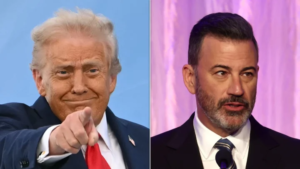The U.S. Supreme Court on Monday declined to take sides in an acrimonious high-stakes legal battle between two tech titans, allowing a substantial antitrust case filed by Teradata Corp. against German rival SAP SE to proceed toward trial.
The court’s unsigned decision permits to remain a 2024 decision by the 9th U.S. Circuit Court of Appeals reinstating claims by Teradata. The suit claims SAP improperly employed its market dominance to stifle competition in the database software industry.
The Essence of the Antitrust Claim
The dispute concerns a practice named “tying” or “bundling.” Teradata, a San Diego data-analytics company, accuses SAP—Europe’s largest software firm and leading player in enterprise resource-planning (ERP) software—of forcing customers to purchase its new database product, HANA, if they wanted to run SAP’s newest and most advanced business-planning applications.
ERP software is the nervous system of large corporations, synchronizing key functions from finances to supply chains. Businesses that operated using SAP’s ERP systems would generate enormous amounts of data each year, which they would commonly analyze in specialized third-party databases, like Teradata.

Teradata’s 2018-sued complaint charges SAP with turning the rules upside down. By making its new, next-generation programs incompatible with Teradata’s database and directly tied to its own HANA database, SAP allegedly used its dominance in the ERP space to create a competitive advantage in the stand-alone database space.
“We are disappointed that the Supreme Court will not hear these important questions of law. We stand firm in our position, rebut Teradata’s claims and await decision by the trial court,” a spokesperson for SAP said. Teradata declined to comment on the Supreme Court decision.
A Legal Battle Over Antitrust Standards
The case has been tracked closely in the technology world because it exists along a fundamental tension in antitrust law: how to evaluate the competitive implications of consolidating different software products.
SAP had argued that the 9th Circuit used an out-of-date and too rigid legal test—the “per se” rule—to infer that certain types of tying arrangements per se are unlawful. SAP had argued that its bundling together of ERP applications with the HANA database was new and beneficial to consumers, which should be subjected to the comparatively less stringent “rule of reason” test. The latter test requires a court to balance anti-competitive harms against pro-competitive justifications.
SAP referenced in its Supreme Court appeal a landmark 2001 antitrust case against Microsoft, in which another appeals court used the “rule of reason” to review the bundling of its Internet Explorer browser with the Windows operating system. SAP argued the 9th Circuit method created a contradiction in how federal courts handle such suits and led the Supreme Court to act.
Teradata, thanks to the 9th Circuit decision, responded that there was no essential legal disagreement and SAP’s actions were a nostalgic case of maintaining anti-competitive tying and not genuine innovation. The appeals court did find sufficient evidence that the issue should be left to the jury.
Widespread Implications for the Tech Industry
The case has more far-reaching implications than the two immediate competitors. Industry titans Microsoft and Meta Platforms submitted a joint “friend-of-the-court” brief on behalf of SAP, echoing general industry concern. They, and others, worry that a stricter “per se” application would discourage the development of integrated and seamless software solutions that many users anticipate.
With the Supreme Court stepping aside, the legal battle is now back in the California federal court. A trial has been scheduled for April 2026, when a jury will hear Teradata’s antitrust claims. The trial will also address a counterclaim by SAP alleging patent infringement on the part of Teradata.
The ruling will have far-reaching implications for the ability of software monopolies to bundle products and compete in linked markets, creating a precedent for future antitrust enforcement in the digital economy.




